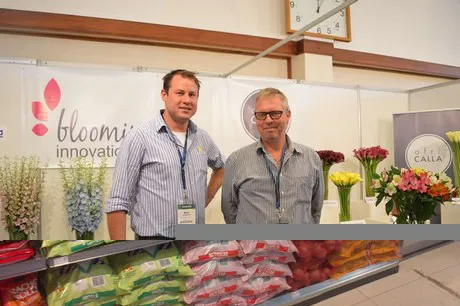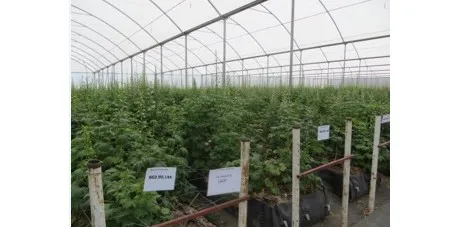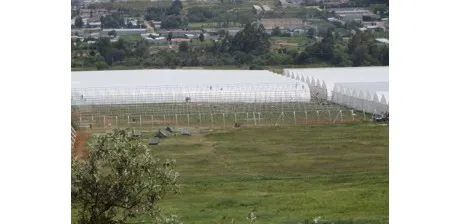
Bert Louwerse and Harry Rooyakkers
Why Kenya?
“Bert has lived in Kenya for several years and always wanted to start up a company over there. We both do not have a background in growing hydrangeas or delphiniums, but we studied horticulture in the Netherlands. Louwerse worked for Agriom as a sales representative and he noticed the potential of Agriom's hydrangea trials in Kenya", says Rooijakkers. So, after doing some research, they decided to start up a hydrangea farm. "The lower initial costs of starting up a company combined with the favorable climate - many light hours and intense sunshine - enables us a year round production." Currently, in collaboration with Agriom and HBA, they are now testing new codes to select new varieties and increase their assortment. In 2014, they decided to start growing delphiniums.
Cultivation
According to Rooijakkers, adding the delphiniums was a relief. "It takes a couple of years to learn the ins and outs of hydrangea cultivation, post harvest, packing and so on. The delphinium, in contrast, is much easier to cultivate and pack." They started with trying out 10 varieties and decided to continue with 6 varieties as the others did not grow well in Kenya. "The only challenge is cultivating new plants and cuttings. However, once you know how to do it, it is not difficult anymore."
Currently, Blooming Innovations grows blue, light blue, pink, dark purple, white and silver-like white delphiniums. "We now know which varieties are growing well in Kenya. However, the problem with this flower is the fact that it comes in flushes. In total, our 1ha greenhouse has 18 bays and from every variety we have 0.5 or 2 bays and one bay has about 8 beds. And just as with the hydrangeas, the delphiniums need to be harvested on time. So, with the current amount of bays, we cannot reach a year round production. At the moment, in the summer period, the demand from our direct clients is increasing, but we cannot produce as we have to change plants in the current greenhouse. For this reason, we decided to add another 1ha greenhouse with 18 bays.

First flowers
The new greenhouse is currently being built by Amiran. "It is an exact copy of the existing 1ha greenhouse that is used for our delphinium cultivation. They started three weeks ago and we hope it will be finished in about five weeks, so we can start planting. We expect to harvest the first flowers in mid-end December. The delphiniums in the old greenhouse will be a bit ahead and we will expect the first harvest at the end of October." At Blooming innovations they are currently working hard making their own starting material for their existing and new greenhouse. "We noticed that this is the best way as the plants need a while to get used to the Kenyan climate.
Competition
"Actually, I have to say that we do not have many competitors", says Ropijakkers. According to him, not many growers cultivate this particular delphinium. "It has double flowers and large stems. Many other delphiniums are seed grown and therefore less tall, up to 90cm. Ours are over 90 to 120cm. Nico Wiegert, the breeder of the delphinium we grow, grows them too and one or two others, in the Netherlands." However, according to Rooijakkers, not only the exclusivity of the product is the reason for their success. Quality plays an important role too. "Trust is hard to gain but easy to lose", he says. "So, the flowers need to be perfect and need to have a long shelf life, if not, we rather throw them away." And this approach seems to be well-accepted. "The feedback we get is very positive." And this is also noticeable at the auction in the Netherlands. "Our long stems are often double and sometimes even triple the price of the shorter stems."

Export markets
From fall to summer, Blooming Innovations supplies the auction in the Netherlands. "In this way, we can fill the gap of the Dutch Delphinium growers that are out of production at that time." And when the volumes of the Dutch growers start to increase, Blooming Innovations shifts to supplying the worldwide market directly. "We have direct sales to the Middle East, Far East (China), India and Australia." And in these countries, the demand is increasing.
Future plans
And what are the next steps? "Usually, every 6 months we look how to proceed. So, now we will look how the production and the sales of the delphiniums with this new greenhouse will occur and then we will decide how to move on", concludes Rooijakkers.
For more information
Blooming Innovations
Harry Rooijakkers
Email: bloominginnovations@gmail.com
www.blooming-innovations.com
